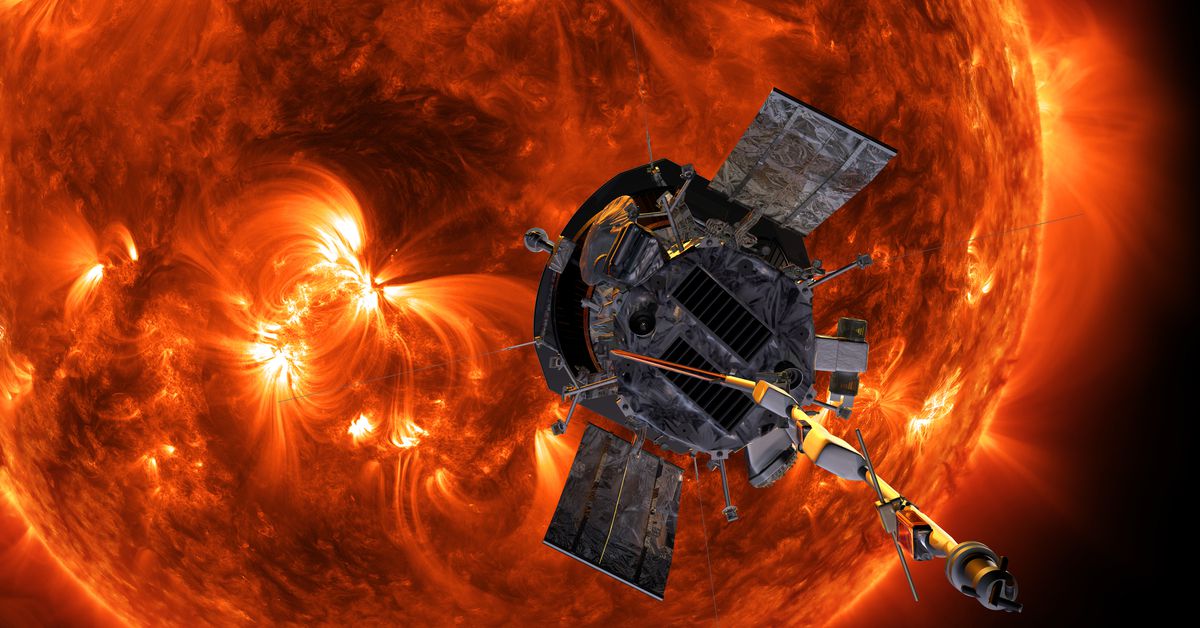On December 26th, NASA received a signal from its Parker Solar Probe, indicating that it had survived an unprecedented close approach to the surface of the Sun. The probe, launched in 2018 by NASA and Johns Hopkins Applied Physics Laboratory, flew just 3.8 million miles from the solar surface on December 24th, marking the closest any human-made object has ever gotten to the Sun.
The Mission’s Success
The Parker Solar Probe’s historic flyby was a testament to the ingenuity of NASA engineers and scientists who designed and built the spacecraft. The probe’s close approach to the Sun provided an unprecedented opportunity for scientists to study the solar wind, the Sun’s heat, and how energetic particles are accelerated to near light speed.
Background Information
The Parker Solar Probe was launched on August 12, 2018, from Cape Canaveral Air Force Station in Florida. The spacecraft is designed to study the corona, the atmosphere surrounding the Sun, which is hotter than the surface of the Sun itself. To achieve this goal, the probe is equipped with a state-of-the-art suite of instruments that can withstand the extreme temperatures and radiation near the Sun.
The Flyby
On December 24th, the Parker Solar Probe flew past the solar surface at a speed of approximately 430,000 miles per hour. The spacecraft was out of contact with mission operations during this time, but NASA scientists were able to reestablish communication on December 26th. According to NASA, the probe transmitted a signal back to Earth indicating that it is in good health and operating normally.
Scientific Objectives
The Parker Solar Probe’s close flyby of the Sun is expected to provide valuable insights into several key scientific areas:
- Solar Wind: The solar wind is a stream of charged particles emitted by the Sun. Understanding its behavior near the Sun will help scientists better comprehend the dynamics of the solar system.
- Sun’s Heat: The Sun’s corona, or outer atmosphere, is hotter than the surface of the Sun itself. Studying this phenomenon will provide insights into the underlying physical processes that drive the Sun’s energy output.
- Energetic Particles: The Parker Solar Probe will study how energetic particles are accelerated to near light speed. This knowledge will help scientists better understand the behavior of high-energy particles in space.
The Parker Solar Probe
The Parker Solar Probe was designed and built by NASA and Johns Hopkins Applied Physics Laboratory. The spacecraft is equipped with a state-of-the-art suite of instruments that can withstand the extreme temperatures and radiation near the Sun. The probe’s heat shield, which faces the Sun, reaches temperatures of around 2,500 degrees Fahrenheit (1,370°C), while the probe itself remains at a relatively cool temperature of around 85 degrees Fahrenheit (30°C).
Future Plans
Now that NASA has confirmation of the mission’s success, it expects the Parker Solar Probe to send detailed telemetry data on its status on January 1st. This information will provide scientists with a better understanding of the probe’s performance and any challenges it may have faced during the close flyby.
The Parker Solar Probe’s historic flyby of the Sun marks an important milestone in the field of space exploration. As scientists continue to analyze the data collected by the probe, they will gain a deeper understanding of the solar system and its underlying physical processes.
Conclusion
In conclusion, NASA’s Parker Solar Probe has successfully completed its historic close flyby of the Sun. The mission marks a significant achievement in the field of space exploration and provides scientists with an unprecedented opportunity to study the solar wind, the Sun’s heat, and how energetic particles are accelerated to near light speed. As we continue to explore the mysteries of the universe, the Parker Solar Probe serves as a testament to human ingenuity and the power of scientific inquiry.
References
- NASA Press Release: "Parker Solar Probe Completes Close Flyby of the Sun"
- Johns Hopkins Applied Physics Laboratory: "Parker Solar Probe Mission"
- Science Magazine: "The Parker Solar Probe’s Historic Flyby of the Sun"




